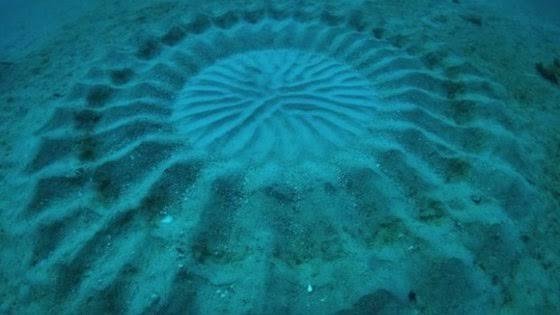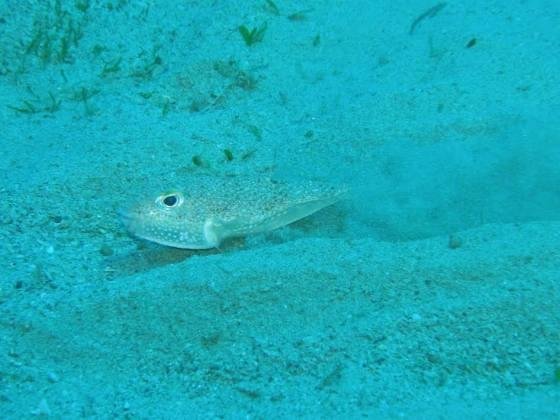Pufferfish Love Explains Mysterious Underwater Circles

In 1995, divers noticed a beautiful, strange circular pattern on the seafloor off Japan, and soon after, more circles were discovered nearby. Some likened these formations to "underwater crop circles." The geometric formations mysteriously came and went, and for more than a decade, nobody knew what made them.
Finally, the creator of these remarkable formations was found: a newly discovered species of pufferfish. Further study showed these small pufferfish make the ornate circles to attract mates. Males laboriously flap their fins as they swim along the seafloor, resulting in disrupted sediment and amazing circular patterns. Although the fish are only about 12 centimeters (5 inches) long, the formations they make measure about 2 meters (7 feet) in diameter.
When the circles are finished, females come to inspect them. If they like what they see, they reproduce with the males, said Hiroshi Kawase, the curator of the Coastal Branch of Natural History Museum and Institute in Chiba, Japan. But nobody knows exactly what the females are looking for in these circles or what traits they find desirable.
Unique circles
Pufferfish mating involves females laying eggs in the fine sediments in the center of the circles, and then the males fertilizing them externally. Then, the females vanish, and the males stay for another six days, perhaps to guard the eggs, the study noted.

Males of some species of cichlids (a type of fish) are known to construct crater-shaped mounds that females visit to have their eggs fertilized, Kawase said. For example, male featherfin cichlids in Africa's Lake Tanganyika build small bowls out of the sand, and display them to females before mating there, said Alex Jordan, a researcher at the University of Texas at Austin who wasn't involved in this study.
But this new pufferfish's geometric patterns have three features never seen before. First, they involve radially aligned ridges and valleys outside the nest site. Second, the male decorates these ridges with fragments of shells. Third, the male gathers fine sediments to give the resulting formation a distinctive
look and coloring.
Strangely enough, the male "gathers" the fine sediments using the circular pattern itself, Kawase said. A fluid dynamics test using a half-size model of one of these circles found that the upstream portion of the circle funnels water and fine sediments toward the center. Then, the downstream peaks and valleys funnel the water outward. The speed of water was slowed by nearly 25 percent in the center, where the eggs are laid, the study noted.
Nice
Wow... Who would have Imagined.
That's cool, thank you for this information! Gobies do smth similar but not that remarkable - males build the nest and hover around actively when female is around, showing that they gonna be good fathers:)
What an interesting story! I studied coral reefs on Bonaire during my biology study.
@bodhissatva
Congratulations @dreamer23! You have completed some achievement on Steemit and have been rewarded with new badge(s) :
Click on any badge to view your own Board of Honor on SteemitBoard.
For more information about SteemitBoard, click here
If you no longer want to receive notifications, reply to this comment with the word
STOPWelcome @dreamer23, always good to meet new Steemians.